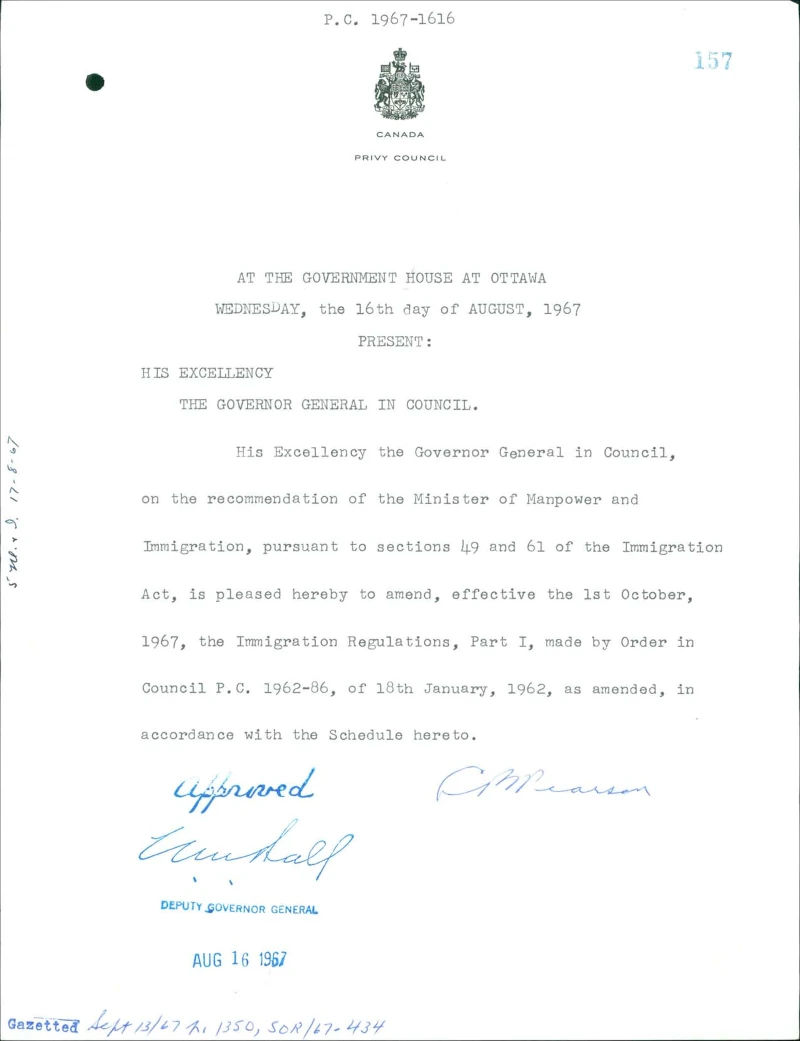
Oct 1, 1967
Canada Moves Away From Race-Based Immigration to Points System
Oct 1, 1967: Canada's new immigration regulations fully implemented a points system, truly ending decades of racially discriminatory policies. While 1962 regulations aimed to remove overt racial bias, the Immigration Act of 1967 was pivotal. By prioritizing education, skills, and age, it introduced a more objective selection process, dismantling a system favouring European immigrants and restricting others. For Chinese Canadians and other minority communities, this Act was a watershed moment, opening pathways for family reunification and skilled migration that had long been denied under racist practices.
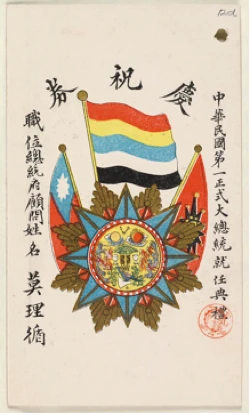
Oct 6, 1913
Britain Officially Recognizes the Republic of China
On October 6, 1913, Britain officially recognized the Republic of China, just days before Yuan Shikai's formal inauguration as president. This formal diplomatic recognition, extended by Britain and several other major powers, affirmed the legitimacy of the republican government that had replaced the Qing Dynasty. The Republic had been established on January 1, 1912, following the Xinhai Revolution, which began with the Wuchang Uprising on October 10, 1911. Meanwhile, even after the fall of the Qing, the Constitutional Monarchy League (保皇黨)—supporters of a Qing constitutional monarchy—remained active in overseas Chinese communities, including in Toronto's Chinatown, where they continued to organize political and cultural activities into the 1910s and beyond.
This recognition came nearly two decades before Japan created the puppet state of Manchukuo in 1932, installing Puyi, the last Qing emperor, as a symbolic ruler. Britain did not recognize Manchukuo and continued to acknowledge the Republic of China as the legitimate government.
Canada, following Britain's lead in foreign policy at the time, also recognized the Republic. However, Canada later diverged from Britain; when the UK recognized the newly established People's Republic of China in 1950, Canada chose not to follow suit. Instead, Canada continued to recognize the ROC government after it relocated to Taiwan in 1949, maintaining this official recognition for two more decades until formally recognizing the PRC in 1970.
Global Affairs
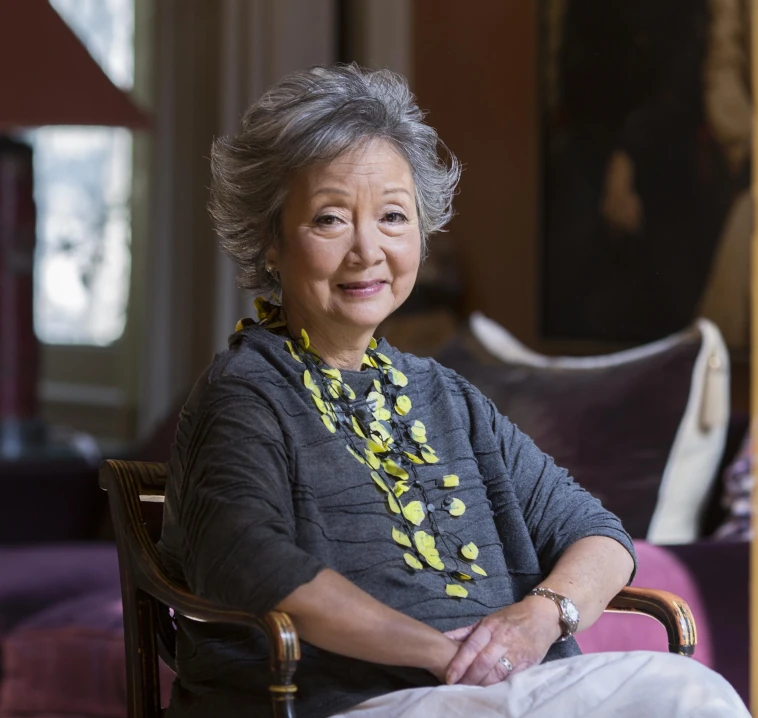
Oct 7, 1999
Adrienne Clarkson Becomes Governor General
October 7, 1999, Adrienne Clarkson (伍冰枝) was sworn in as Governor General, a historic moment as she became the first racialized person and first Canadian of Chinese heritage to hold this office. Her appointment was profoundly significant for Chinese Canadians and other minority groups, symbolizing a major step towards a more inclusive national identity. Born in Hong Kong and arriving as a refugee, Clarkson had a distinguished career as a broadcaster and journalist before her appointment. She was appointed an Officer of the Order of Canada in 1992. Upon her appointment as Governor General (a role she held until 2005), she also became Chancellor and Principal Companion of the Order of Canada. During her tenure, she focused on national unity, Canadian culture, and connecting with diverse communities, including a strong engagement with Indigenous peoples. Her tenure celebrated Canada's evolving multiculturalism and provided inspiration for many Chinese Canadians.
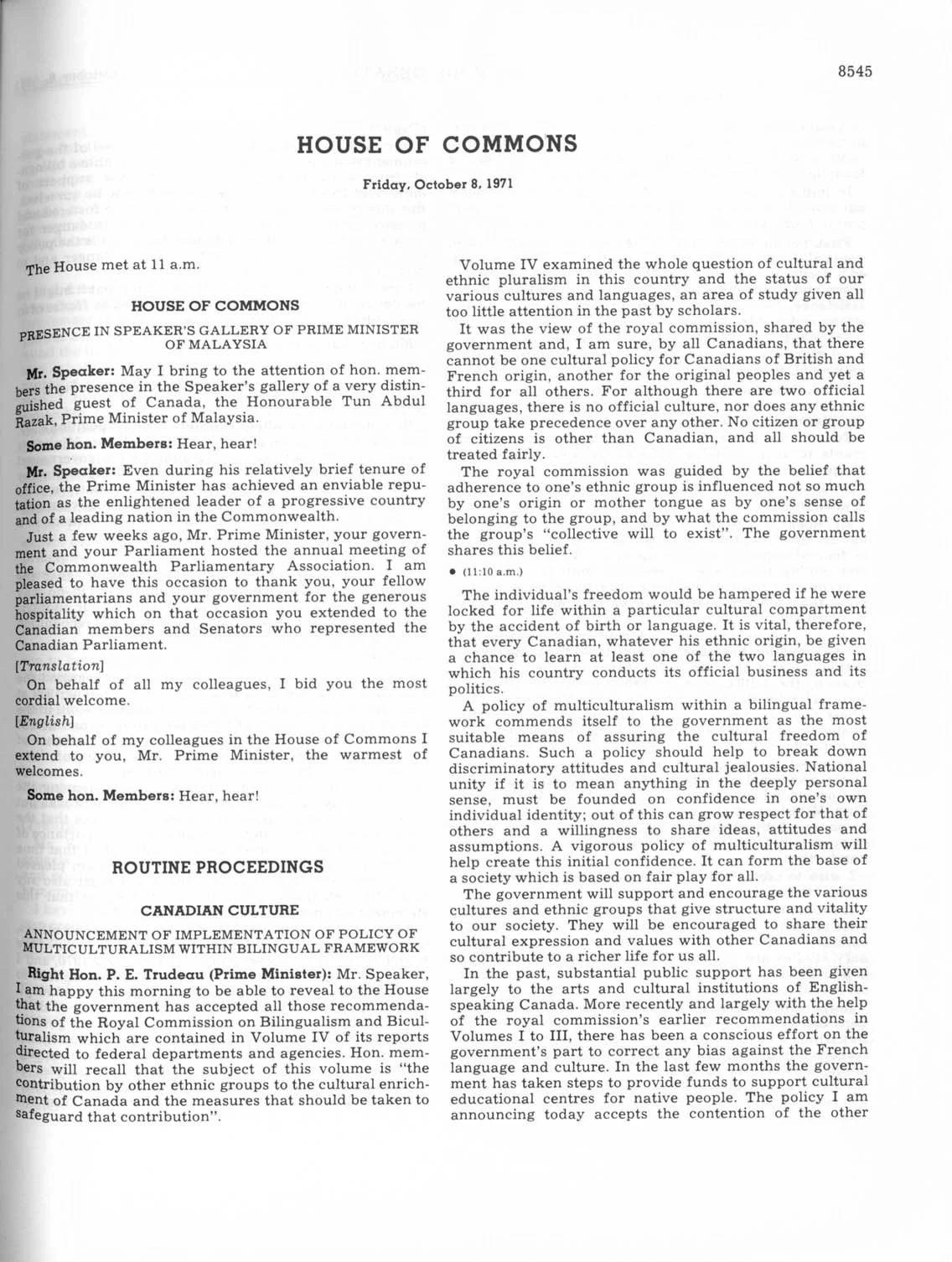
Oct 8, 1971
Canada Adopts Official Multiculturalism Policy
Oct 8, 1971: Canada officially adopted multiculturalism, a landmark policy recognizing cultural diversity as central to its identity. Prime Minister Pierre Trudeau announced the policy in the House of Commons, aiming to support cultural groups, help overcome cultural barriers, promote intercultural exchange, and assist immigrants in learning an official language. For Chinese Canadians and other minority communities, this marked a significant formal shift from previous assimilationist ideals, recognizing their contributions and heritage as integral to the Canadian fabric. It laid the groundwork for the later Canadian Multiculturalism Act of 1988.
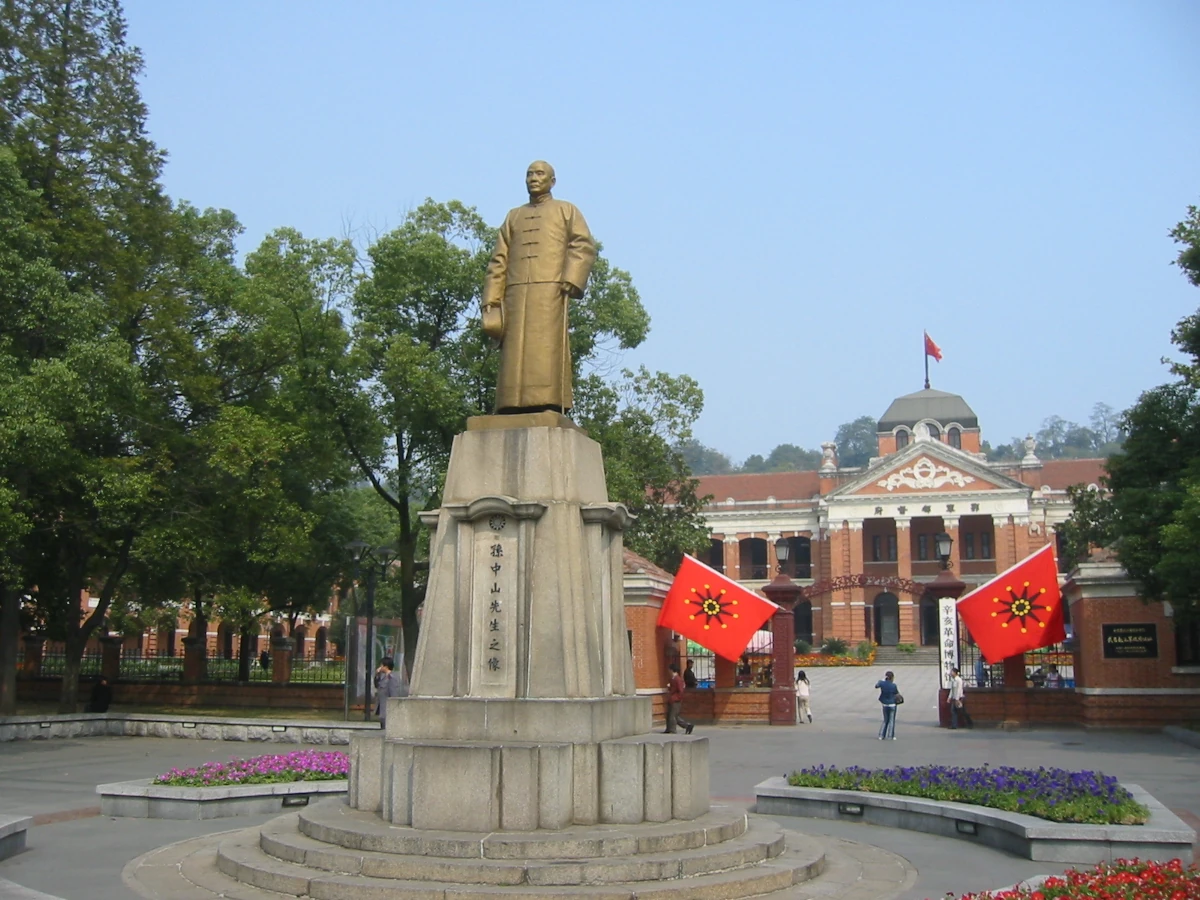
Oct 10, 1911
Wuchang Uprising & Xinhai Revolution
On October 10, 1911, the Wuchang Uprising ignited the Xinhai Revolution, a pivotal moment in Chinese history that ultimately overthrew the Manchu-led Qing Dynasty and established the Republic of China. This revolution was not just about liberation from imperial rule; it also carried a heavy human cost.
The initial uprising was followed by brutal struggles for control, resulting in thousands of casualties. While the revolution was largely welcomed by the Han majority, anti-Manchu sentiment led to tragic incidents of ethnic cleansing. In some areas, there were massacres of Manchu civilians, particularly in cities where Manchu garrisons were located.
This revolutionary effort was not solely an internal affair of China; it was significantly funded by a global network of overseas Chinese, including the Chinese in Canada. The support from overseas Chinese did not end with the revolution, continuing through the decades that followed. Even after the ROC government located to Taiwan in 1949, this deep-seated loyalty persisted among many overseas Chinese communities, viewing it the ROC as the sole legitimate government of China. The diaspora were not just funders of the revolution, but long-term stakeholders in the fate of the republic they helped create.
October 10th has been officially recognized as Double Ten Day in Taiwan, celebrating the founding of the Republic of China. For many Chinese, the Xinhai Revolution represents the end of imperial rule and the dawn of a new era, albeit one that emerged from significant bloodshed.
Global Affairs
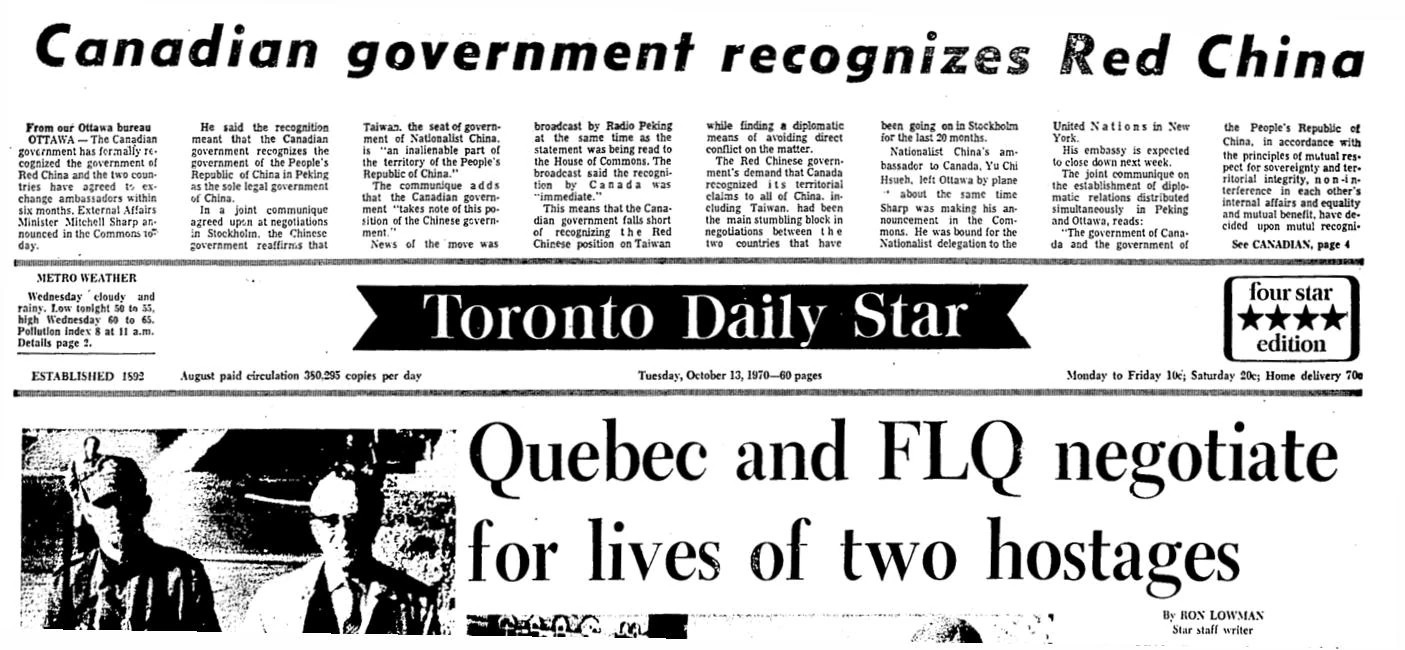
Oct 13, 1970
Canada Recognizes People's Republic of China
On October 13, 1970, Canada officially recognized the People's Republic of China (PRC), a bold foreign policy move under PM Pierre Trudeau. This decision came two decades after Britain's recognition in January 1950, with Canada's delay largely reflecting its alignment with US policy during the Cold War; the US would only recognize Beijing in 1979. The move had significant implications for Chinese Canadians, particularly those with ties to mainland China. It facilitated family reunifications, cultural exchanges, and trade that had been restricted. While diplomatic relations shifted from Taiwan (ROC), the 'Canadian formula' acknowledged Beijing's claim without fully endorsing it, allowing continued unofficial ties with Taiwan. This recognition by a major Western nation influenced others and reshaped global diplomacy. For many Chinese Canadians, it opened doors for renewed connections with their ancestral homeland and contributed to the community's evolving identity. It also paved the way for increased immigration from mainland China in subsequent decades, further diversifying the Chinese Canadian community.
Global Affairs
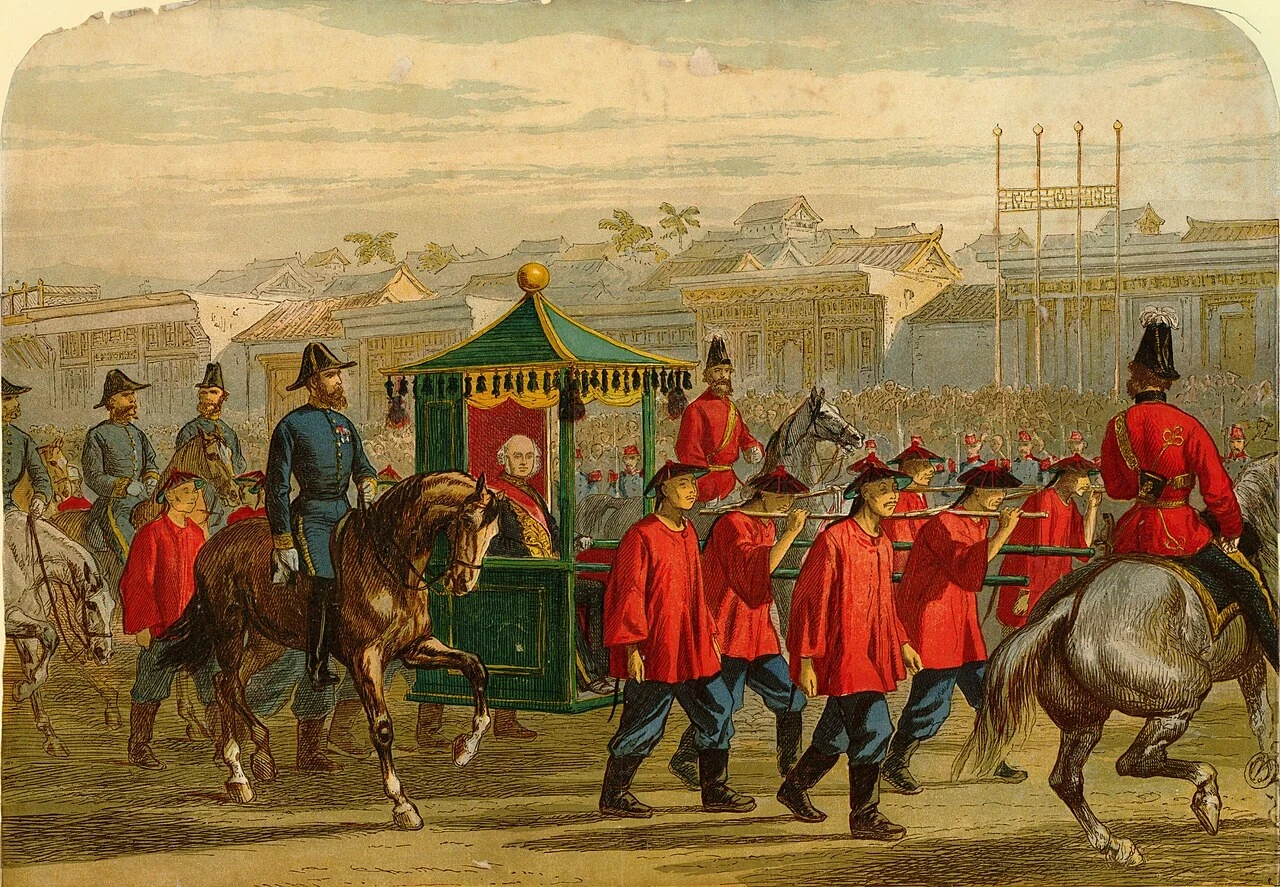
Oct 18, 1860
Imperial Old Summer Palace Burned Down
October 18, 1860, during the Second Opium War, British and French forces completed the looting and burning of Beijing's Imperial Old Summer Palace (Yuanmingyuan). Former Governor General of Canada The Earl of Elgin gave the order. For later generations of Chinese, including those who emigrated to Canada, the memory of Yuanmingyuan's destruction contributes to a complex historical understanding of China's relationship with the West and the colonial past.
Global Affairs
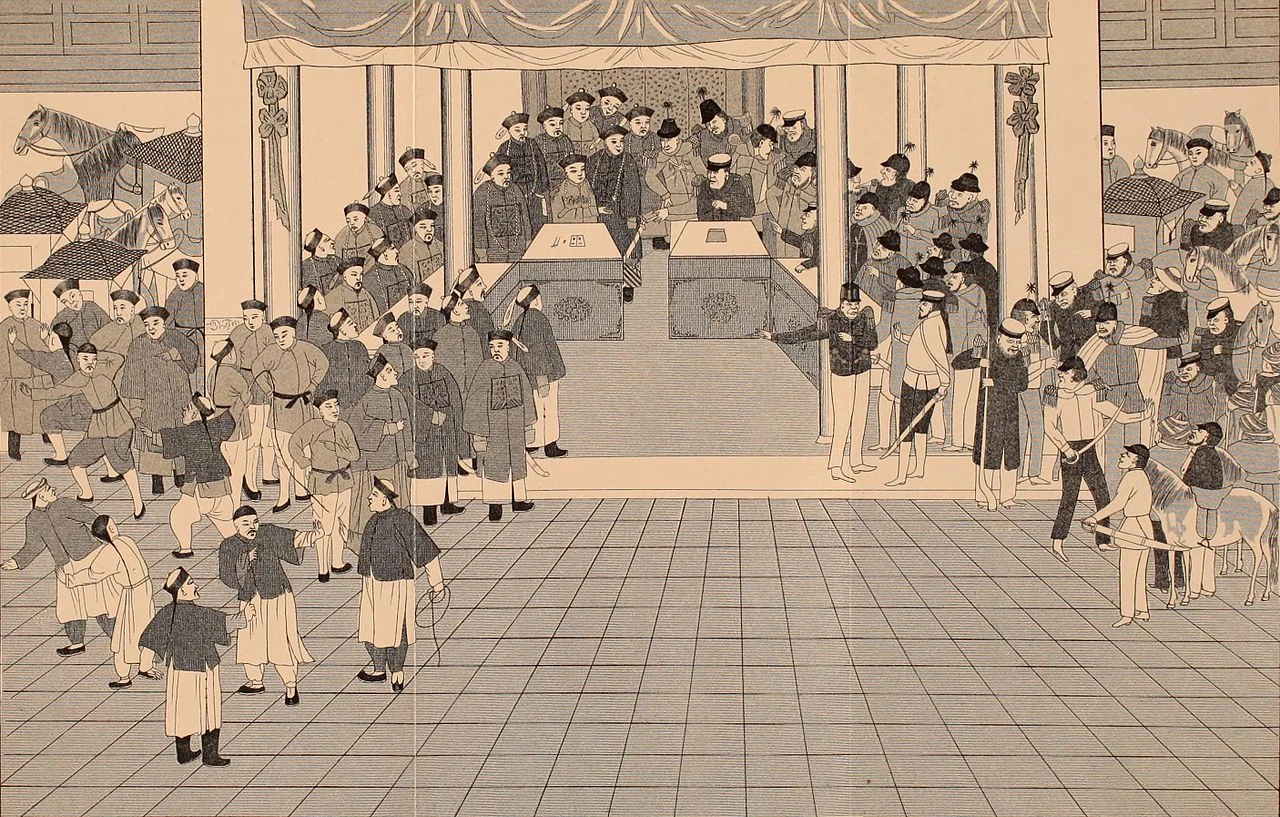
Oct 24, 1860
Convention of Peking: Second Opium War Ends, Additional Territory Ceded to British Hong Kong
October 24, 1860, the Convention of Peking (Beijing) formally ended the Second Opium War for Britain and France. Negotiated by Lord Elgin (former Governor General of Canada), it forced China to cede the Kowloon Peninsula and Stonecutters Island to British Hong Kong. This expansion of Hong Kong had profound long-term consequences for its inhabitants and for future Chinese migration. The growing British presence in Hong Kong established a key port.
Global Affairs

Oct 24, 1929
Norman Kwong: CFL Star & First Chinese Canadian Lt. Gov.
Born in Calgary on October 24, 1929, Norman Kwong (林錦光), known as the "China Clipper," became a pioneering Chinese Canadian football star and an excellent role model. He was awarded the Order of Canada on October 21, 1998. His football prowess earned him numerous awards, including a place in the Canadian Sports Hall of Fame. Kwong grew up in Bridgeland-Riverside where his family ran a grocery store. Despite prevalent racism, he joined the Calgary Stampeders in 1948, just after the Chinese Exclusion Act's repeal, becoming Canada's first professional Chinese Canadian football player and the youngest to win the Grey Cup at 18. In 2005, Kwong made history again as Alberta's first Chinese Canadian lieutenant-governor, serving until 2010.
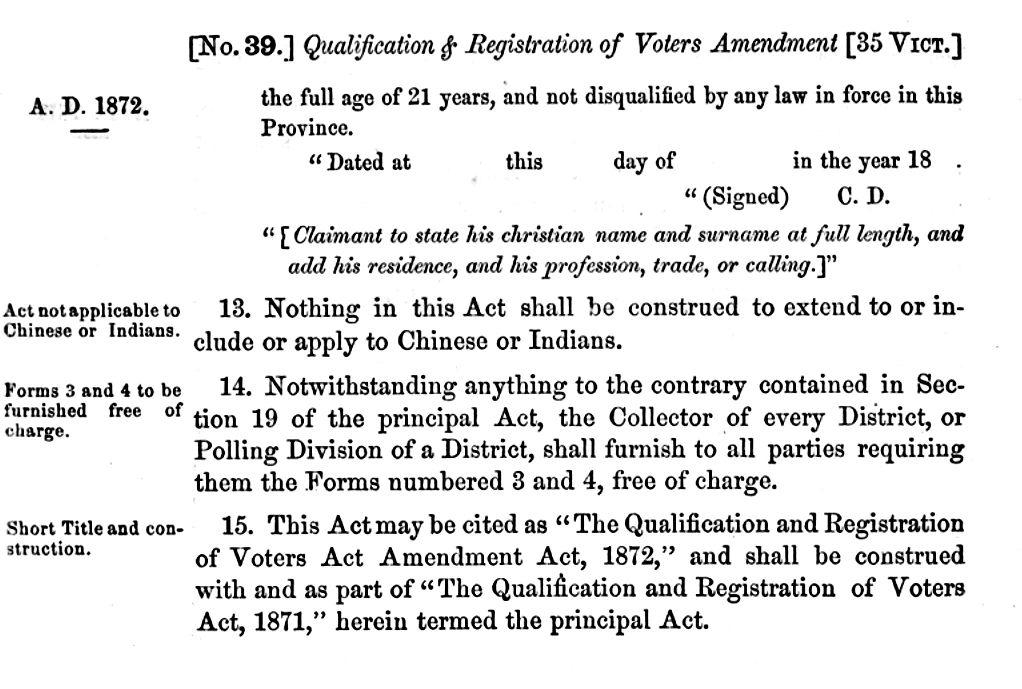
Oct 26, 1872
BC: First Province to Disenfranchise Chinese Voters
British Columbia was the first province in Canada to explicitly disenfranchise Chinese residents. Through the Qualification and Registration of Voters Act Amendment Act, 1872 (assented October 26, 1872), BC barred “Chinese or Indians” from voting in provincial elections—an early reflection of systemic anti-Chinese racism. This injustice endured for 75 years, until the Provincial Elections Act Amendment Act, 1947 restored voting rights to Chinese British Columbians on April 3, 1947.
State Oppression